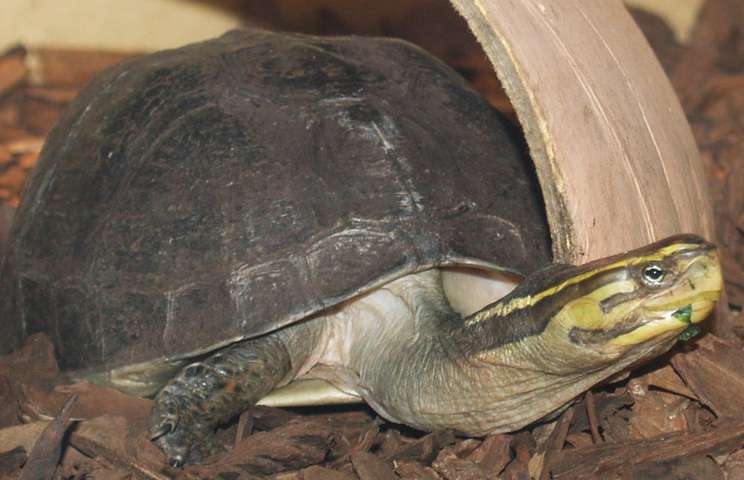
Musk turtles with significantly huge heads when compared to other Musk turtles are given that moniker. They typically live in wetlands, rivers, and ponds. One subspecies of the Loggerhead Musk turtle is the Stripe-necked Musk turtle (Sternotherus minor peltifer).
The shells of loggerhead turtles range in color from brown to tan and have dark markings. Typically, dark in color, their heads and skin have noticeable yellowish striped patterns running around the head and neck. As carnivores, these little turtles primarily eat crustaceans, insects, mollusks, and occasionally vegetation.
Care as a Pet

Housing
The loggerhead turtle is a freshwater aquatic turtle that inhabits ponds, streams, and lakes. They prefer to stay in the water, and they rarely sunbathe. They enjoy climbing cypress knees and logs to sit on and enjoy the sun. Although they are visible during the day, they are said to be active both then and at night. Long-lasting underwater dwellers, loggerhead musks really obtain their oxygen from the water. They hibernate over the winter months between rocks or beneath soft bodies of mud. They frequently wander along creeks and in the bottoms of rivers.
Predators
Alligators, alligator snapping turtles, snapping turtles, large fish, and cottonmouth snakes typically prey on adults while nests are preyed upon by birds, reptiles, and mammals such as skunks, opossums raccoons, crows, , and common king snakes. Predators of juveniles typically include larger creatures. Alligators and humans are the main predators of adults. Musk turtles have some defenses against predators, and they exude a foul odour to deter them. They can bite with the help of their powerful jaws.
Feed
Since they are carnivores by nature, loggerhead musk turtles frequently consume plants or insects. They can use their powerful jaws to consume other turtles or to break open their prey’s shells. They both belong to races that are primarily carnivorous, and their feeding habits are remarkably similar to those of striped mud turtles. They will consume some plant matter, though. They eat mollusks, crayfish, aquatic insects, and the most common type of tiny snails. They occasionally consume carrion or algae from rocks. Even degraded material found on the sides of rivers and creeks may be consumed by them. They can eat duckweed, fish eggs, and tadpoles while submerged in water.
Table





